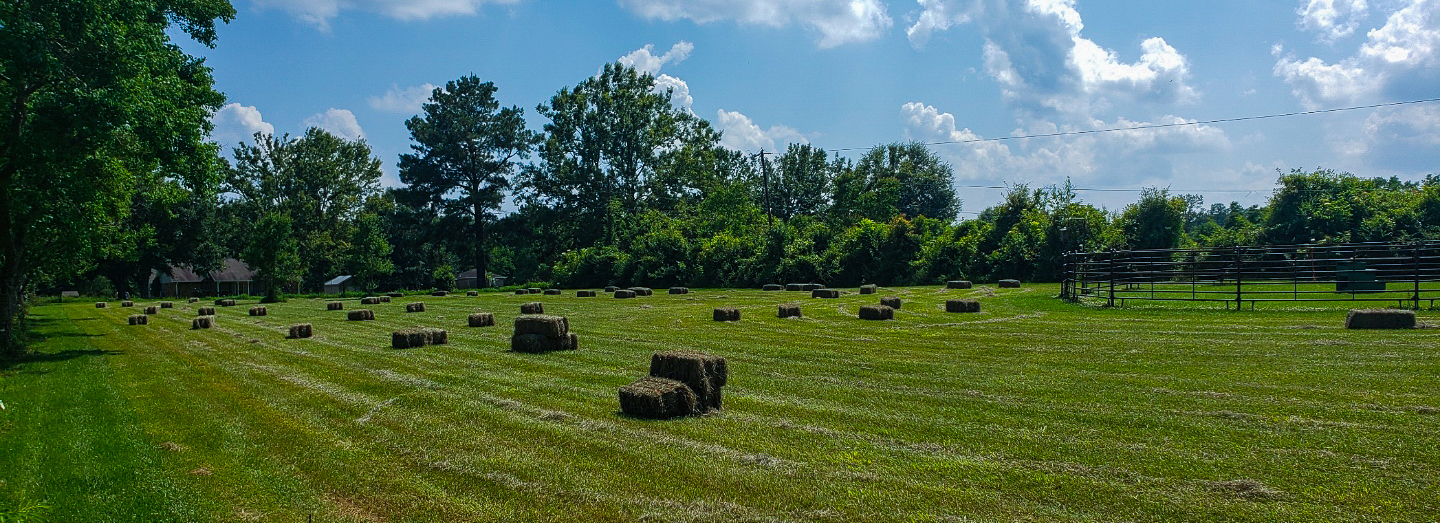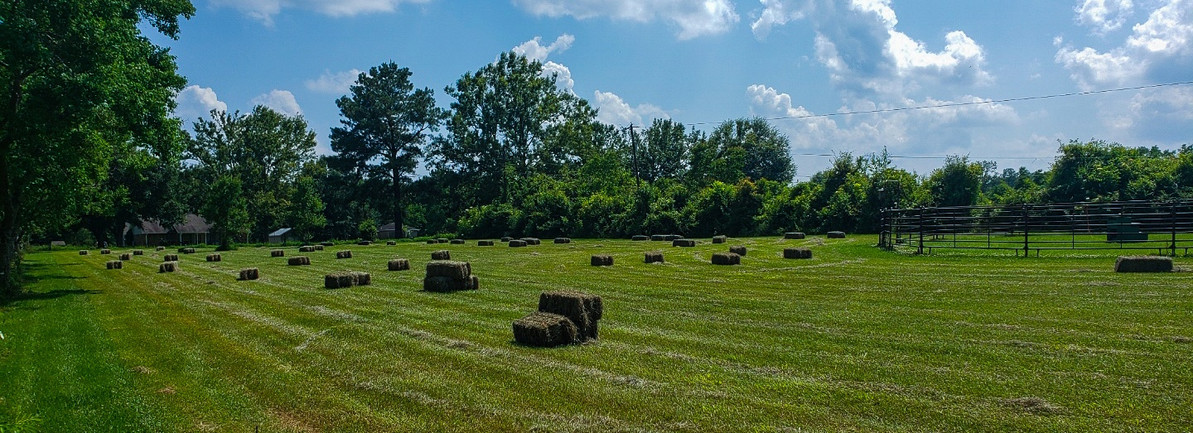Back by popular demand! The new and improved Hay Calculator!

The following is a blog we posted to our website and social media account in October of 2018. It is our most shared blog post ever. When we updated our company website, it was removed due to its incompatibility with the new platform. However, enough people contacted us asking for it to be replaced that we took the time to redesign and update the calculator to make it even better. Here it is!
Livestock Winter Hay Needs
With winter coming on, it is time to make sure that you have enough hay in the barn to last until your pastures are growing again next spring. While there are many factors to consider when calculating winter hay needs, we are giving you some conversions to simplify the process—and even providing you with a handy “Hay Calculator” to make the process even simpler!
Before performing any calculations, take these factors into consideration:
- Length of season. The number of months you will need to feed hay will vary by your location. Animals can forage much later in the fall and earlier in the spring in the southern half of the United States. Northern areas are much more dependent upon hay to keep animals in good condition through the winter months. Here in Indiana, we typically need to feed hay from October through March. Though it is sometimes tempting to allow animals to forage later or earlier in the year, it is best to remember that this can damage pastures and keep them from reaching peak production during the growing season—a topic for another blog.
 Temperatures. Animals in areas with extreme winter temperatures will require a higher caloric intake to maintain condition. If your location is prone to long cold spells where low temperatures can regularly fall below zero, be sure to calculate your hay needs on the higher side.
Temperatures. Animals in areas with extreme winter temperatures will require a higher caloric intake to maintain condition. If your location is prone to long cold spells where low temperatures can regularly fall below zero, be sure to calculate your hay needs on the higher side.- Number of animals. This sounds extremely basic, but more animals, more hay. Be sure to calculate in any additional animals you may be purchasing/selling over the winter or births that may occur over that time.
- Animal performance. Gestating or lactating females will need more and higher quality hay for milk and offspring production. Working animals will also require more calories than non working animals. Growing animals will require increasing amounts of hay as they develop.
- Weight of animals. Again, very basic, but larger animals require larger amounts of hay to maintain condition than smaller animals. The table provided below gives you an estimate of your animals’ needs.
Now that you have considered these factors, use the following “Hay Calculator” to determine your livestock’s winter hay needs. Simply input your animal species, average animal weight, number of animals, number of days you will need to feed hay, and average bale weight. This will give you the total number of bales you will need to have in the barn to meet the needs of your animals until spring. Give it a try!
https://tractortoolsdirect.com/hay-calculator/
For future reference, this calculator can also be found under the “Information” tab on the Tractor Tools Direct homepage.

Recent Posts
-
Yes! Cutting Height Matters in Haymaking
When it comes to haymaking, one of the most crucial decisions a farmer or producer must ma …Jul 1st 2025 -
Weather Watchers: The Role of Weather in Haymaking
When it comes to producing high-quality hay, few factors are more critical—or more u …Jun 24th 2025 -
Small Farm Success: The Case for DIY Hay Production
At Tractor Tools Direct, we are committed to helping small farm operations achieve haying …Jun 16th 2025




